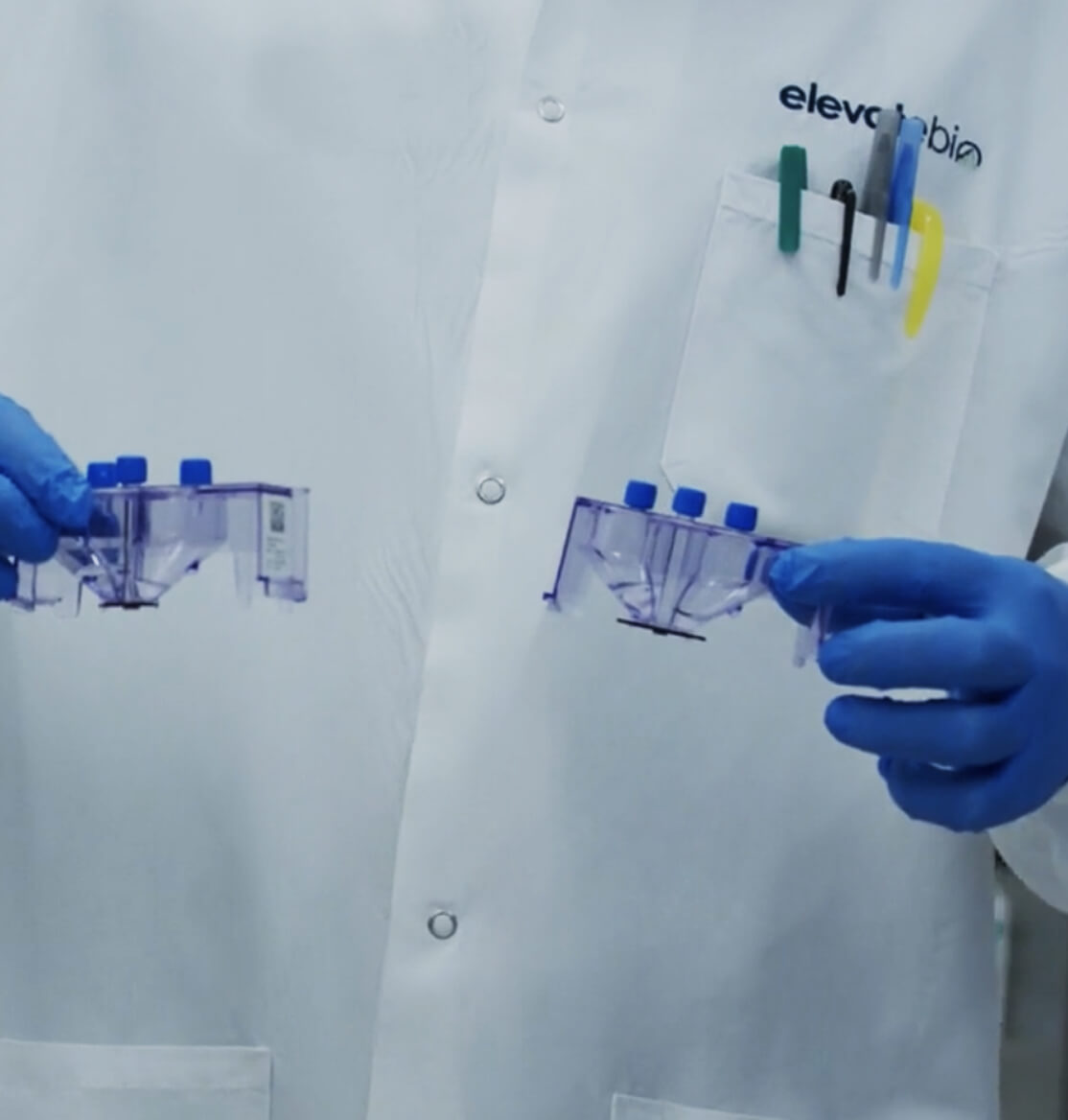Addressing Gaps in Cystic Fibrosis Treatment by Fixing Nonsense Mutations



Cystic fibrosis (CF) is a life-limiting disease caused by the inheritance of two recessive mutations in the cystic fibrosis transmembrane conductance regulator (CFTR) gene. These mutations express poorly functional or non-functional CFTR protein that results in thickening of mucus in the lung, digestive fluids, and other secretions that interfere with normal organ function. About 3,500 children in the U.S. are born with CF each year.
The most common CFTR gene mutation, ΔF508, is missing nucleotides and produces a mutant protein that functions poorly because it does not fold properly. About two-thirds of CF patients worldwide and 90% in the U.S. have this mutation. Recently approved therapies for CF work by stabilizing the mutant protein, allowing it to function more normally.
However, about 7% of CF cases involve nonsense mutations in the CFTR gene. These mutations encode stop codons that prematurely halt gene translation, resulting in a truncated, non-functional form of the protein. Current therapies cannot normalize the protein’s function, leaving CF patients who have these mutations with no therapeutic options.
Life Edit Therapeutics has received an award from the Cystic Fibrosis Foundation (CFF), under its Path to a Cure initiative, to explore our gene editing technology platform for the potential treatment of these CF patients by helping their cells produce functional CFTR protein.
Editing issues
While CF is a prime candidate for gene editing therapy, many available gene editing technologies are limited in their ability to treat the disease, especially when it involves nonsense mutations.
For example, the CRISPR-Cas9 system has been used to tackle cystic fibrosis by attempting to introduce the nucleotides that are missing in the ΔF508 mutation of CFTR.1,2,3,4,5 However, this approach cannot replace the missing nucleotides in the 7% of CF patients with nonsense mutations.
Base editors have been used to correct different CFTR nonsense mutations in vitro, resulting in the expression of functional protein.6,7 While base editing has the advantage of correcting genes without cutting them as conventional CRISPR-Cas does, the CRISPR-based A base editors (ABEs) used to date have significant drawbacks, both generally and for CF applications.
First, ABEs commonly used in these early experiments are too large to package into the adeno-associated viral (AAV) vectors that are currently the leading delivery method for gene therapies.
Second, current base editing technology in use by various groups rely on a single nuclease – Cas9 from Streptococcus pyogenes (SpyCas9) – and some engineered variants of that protein. Base editing with these proteins has only been able to access three different CF nonsense mutations. This is because SpyCas9 can only target sequences located near the required GG protoadjacent spacer motif (PAM); but most CFTR nonsense mutations are not close enough to a GG PAM for the deaminase portion of the ABE to correct them. This is true even for newer variants of SpyCas9 which have been engineered to recognize a smaller single G nucleotide PAM.
As it happens, at Life Edit, we may have the right tools to avoid these shortcomings.
Cutting through the nonsense
In initial conversations with the CFF, it was clear to us at Life Edit that the foundation was looking for industry partners to address the needs of patients whose disease is caused by nonsense mutations. We knew right away that the ABEs in our platform were ideal for correcting those.
Life Edit’s gene editing platform is based on the world’s largest and most diverse collection of novel RGNs and deaminases, identified in the proprietary library of more than 80,000 microbes from AgBiome – the company that spun out Life Edit.
Beyond the collection’s sheer size and diversity, our RGNs and base editors have specific advantages that underscore their potential for addressing the needs of CF patients with nonsense mutations.
Our RGNs are much smaller than SpyCas9, which is 1,300 amino acids long. So, not only are our RGNs easily packaged into an AAV vector, their smaller size makes them suitable for other delivery technologies, such as nanoparticles. Our RGNs also recognize a wide suite of two- and one-nucleotide PAMs, including those that contain bases other than G. This gives us more flexibility in positioning the base editor to correct the target nonsense mutation. Additionally, our RGNs can be tethered to proprietary deaminases to generate novel, modular base editing systems.
We have explored our collection of ABEs for their potential to correct the six most common nonsense mutations in CFTR to restore the protein’s function, and begun testing several ABE constructs, each of which uses a different proprietary Life Edit RGN as its foundation. Leveraging the PAM-recognition diversity of our RGNs, we have the ability to access all of the most common mutations with our engineered base editors.
The award Life Edit received from CFF offers us a great opportunity to explore our technology and demonstrate its potential in a population of patients who still have huge unmet needs. The therapeutic focus of this project also gives us the opportunity to learn more about the platform and our base editors.
References
- Schwank G, et al. Functional repair of CFTR by CRISPR/Cas9 in intestinal stem cell organoids of cystic fibrosis patients. Cell Stem Cell. 2013;13:653-658. doi:10.1016/j.stem.2013.11.002.
- Crane AM, et al. Targeted correction and restored function of the CFTR gene in cystic fibrosis induced pluripotent stem cells. Stem Cell Reports. 2015;4,:569-577, doi:10.1016/j.stemcr.2015.02.005.
- Firth AL, et al. Functional Gene Correction for Cystic Fibrosis in Lung Epithelial Cells Generated from Patient iPSCs. Cell Rep. 2015;12:1385-1390. doi:10.1016/j.celrep.2015.07.062.
- Hollywood JA, Lee CM, Scallan MF and Harrison PT. Analysis of gene repair tracts from Cas9/gRNA double-stranded breaks in the human CFTR gene. Sci Rep. 2016:6:32230. doi:10.1038/srep32230.
- Sanz DJ, Hollywood JA, Scallan MF and Harrison PT. Cas9/gRNA targeted excision of cystic fibrosis-causing deep-intronic splicing mutations restores normal splicing of CFTR mRNA. PLoS One. 2017;12:e0184009. doi:10.1371/journal.pone.0184009.
- Gaudelli NM, et al. Programmable base editing of A*T to G*C in genomic DNA without DNA cleavage. Nature. 2017;551:464-471. doi:10.1038/nature24644.
- Jiang T, et al. Chemical modifications of adenine base editor mRNA and guide RNA expand its application scope. Nat Commun. 2020;11:1979, doi:10.1038/s41467-020-15892-8.